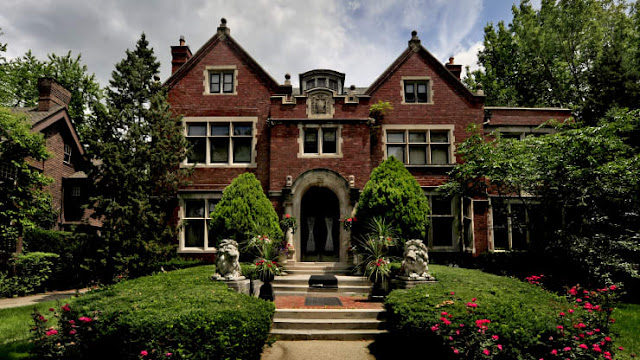That’s something we can do at home to welcome the Year of the Ox and still have ‘din-dining’ fun with a bit pre-recorded help.
IT’S going to be a cheap Chinese New Year. For one thing, I haven’t even gone to the bank to get new notes for ang pow. Since I won’t be visiting or expecting visitors, there’s no point in preparing the red envelopes.
Despite the amended SOP allowing 15 family members within 10km radius to attend, my reunion dinner will be kept to just seven of us – including my maid – living in the same house. My sisters will not be able to return from Sydney or Singapore this time.
I have hung up my red lanterns, traditional decorative knots, set up vases of pussy willow, silk peonies and peach blossoms and bought baskets of mandarin oranges to make the house more festive.
But there is a hollowness to it. No one has been feeling bullish ever since our infection rates spiked dramatically and the movement control order was reimposed and now extended.
As for the reunion dinner, no one feels like having the traditional steamboat which is best eaten with lots of people. So we will tapau salted egg crabs from our favourite seafood restaurant and I will add a few home-cooked dishes.
Our lou sang dish will be made with the store-bought pickled and preserved ingredients as well as freshly grated daikon, carrots, pomelo and Korean pear. Instead of raw salmon, I am going to try it with unagi, Japanese grilled eel.
This is the thing I miss most this CNY: not being able to meet friends for lunch and dinner and noisily toss the fish. In previous years, I could happily lou sang at least half a dozen times.
My sister who lives in Singapore told me the government has taken a different approach. Dining-in at restaurants is allowed but with strict instructions how it should be done.
She says diners aren’t allowed to remove their face masks except to eat and drink. They put the masks back on to chat after the eating is done.
That is actually the right thing to do. We relaxed our restrictions to allow dining and we assumed we were somehow safe to strip off the mask because we are eating and or drinking. Well, serves our ignorance right. That is probably one of the causes of infections going up and spreading into the community.
I learned of a case in Seoul involving two Covid-19 positive people sitting in a coffee outlet. They were asymptomatic and were in the shop for hours, working on their laptops, sipping their coffee with their masks off.
By doing so, they became super-spreaders to many others who were also unmasked and sharing the same enclosed space. What is interesting and telling is that none of the waiters and staff who were masked all the time got infected.
That’s why Singapore’s Health Ministry’s SOP for diners this CNY is as follows:
“Those who are dining out should make sure they wear a mask if they are not eating or drinking. We already do not allow singing (including by diners) and other live performances at F&B establishments and work-related events where food is served.
“Diners should also avoid raising their voices, at all times. This also means that face masks must be worn during the tossing of yusheng (raw fish), and that the lohei (tossing of the fish and the other ingredients in the dish) should be done without any verbalisation of the usual auspicious phrases.
“F&B establishments and enterprises serving lohei must ensure that both the staff and patrons comply with these requirements.”
That does take the joy and fun out of the lohei ritual because we loud, noisy Chinese do love “din-dining” but there is a good reason for the ban. Research already shows that when we sing or shout, our spit droplets fly much wider and further.
But an enterprising Singaporean vlogger has loaded a video on YouTube entitled Auspicious Lohei Sayings and Prosperous Wishes With One Minute of Huat Ahh! that you can play for some festive noise.
I think it’s a good idea to resort to playing the video even when we lohei at home with family members.
If you are not happy with the video’s sound effect, I suppose you can prerecord your own auspicious phrases with CNY music in the background and maybe the sound of firecrackers going off too.
Singapore’s SOP goes further: Since Jan 26, “To further mitigate the risk of large community clusters arising from infections that spread within a household and through them to all their contacts, we will impose a cap of eight distinct visitors per household per day. Individuals should also limit themselves to visiting at most two other households a day, as much as possible.”
As my sister mused, is this enforceable? Probably not. That’s why the SOP appeals to everyone to cooperate with the new measures.
That’s the best all of us, whether in Singapore, Petaling Jaya or Sydney, can do. Respect proper mask wearing, maintain physical distancing and spend as little time as possible in one place, especially if it’s an enclosed space. Avoid crowds and wash those hands frequently!
Meanwhile, like everyone else, I will breathe a sigh of relief on Friday when we see the last of the Rat and we usher in the Year of the Niu. Niu is the Chinese character that generally refers “to cows, bulls, or neutered types of the bovine family, such as common cattle or water buffalo”, says Wikipedia.
Somehow, when it comes to naming the Chinese new year, the English translation of niu is ox and not cow or bull. We don’t say “year of the cow” or “bull”.
Yet, the popular image of the niu depicted on greeting cards and ang pow envelopes, of mall decorations, is that of a bull poised to charge with mighty horns, full of power and virility.
Indeed, the bull figures in many cultures, worshipped as a god and the ancestor of kings in several ancient civilisations.
But it is the domesticated, humble cow/bull/ox that has served humankind much more. For thousands of years, as oxen, they have been harnessed to plough fields, thresh and grind grain, pull carts and other heavy loads. For that purpose, oxen are usually castrated – and therefore more docile – cattle. As cows, they provided milk and as cattle, were slaughtered for their meat and hides.
In Chinese culture, the niu is seen as good-natured, hard-working, dependable and associated with good harvests and fertility. It has been anthropomorphised to have the qualities of gentleness, loyalty and trustworthiness.
According to Jupiter Lai, a Chinese astrologer quoted by The Japan Times, 2021 is the Year of the Metal Ox with the earth element, “representing stability and nourishment” which is exactly what the world needs now.
The world was driven crazy by the devious Rat whose year was fuelled by its yang energy. The Ox will bring in much needed yin energy to calm things down. At least that’s what the fortunetellers are saying. And very carefully at that.
I actually find it quite amusing that all the feng shui and Chinese horoscope websites seem to be very cautious in predicting what’s in store in 2021. I know of none who got it right for 2020.
Even without the soothsayers telling us, we know there will be long and difficult months ahead. But for the next week or two, let’s try to uplift our spirits, give thanks for a brand new year and pray for everyone’s health.
Stay vigilant! Gong Xi Fa Cai!
By June H.L. Wong -The views expressed here are the writer’s own.
Related
Xi extends Spring Festival greetings to all Chinese
https://youtu.be/kXmeRzutqsA
Related posts:























